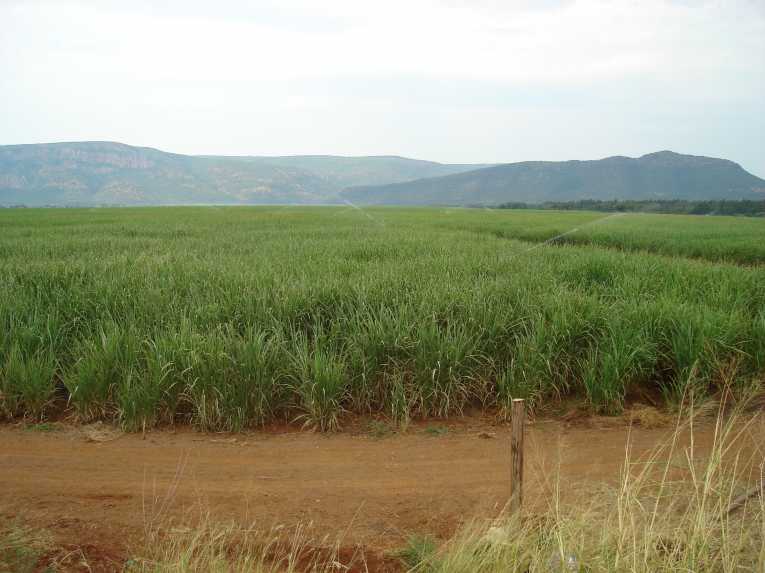Sugarcane, which fuels 25% of all car journeys in Brazil, has been recognized as a potential boon in slowing global climate change - sugarcane-based ethanol can produce much less climate-change causing emissions than fossil fuels. But the environmental benefits of sugarcane apparently don't stop there. A new study published in Nature Climate Change shows that switching from crops and pasture-land, to growing sugarcane, can help to cool the local climate.
The study, by a group of scientists from the Carnegie Institution's Department of Global Ecology, looked at how changing land-use impacts on the climate of the cerrado region of Brazil. The cerrado is a wide-open landscape, south of the Amazon rain forest, and is considered to be Brazil's savanna-land. But its natural dense grasslands and scattered woodlands have been under assault from encroaching cattle and cash-crop farmers for decades. Much of the land has been turned over to cattle, soybeans, maize and, increasingly, sugarcane.
The team from Carnegie were interested in how switching from cattle-ranching, and other forms of agriculture, to plantations of sugarcane stacked up climatically. Was the denser vegetation of sugarcane having an effect on the local climate? To answer this, they pored over data from the various satellites that have scanned the area, of some 700,000 square miles, in detail. They were seeking to map out changes in temperature, albedo and enviro-transpiration for different land uses
It is the albedo and transpiration that have the biggest effects on local temperatures. Albedo measures the reflectivity of the land - how much sunlight is absorbed, and how much is shot back into the atmosphere. Higher albedo landscapes warm the local environs, as they absorb more of the sun's energy.
Enviro-transpiration refers to how water vapor is lost from the land - both from evaporation from the soil, and via the water vapor that plants naturally 'breathe' put, to aid water flow from their roots. This loss of water helps cool both plants and soils, and so lowers local temperatures.
What the Carnegie scientists found was that the thick tall plantations of sugarcane more effectively mimicked the original vegetation than other farmed crops or pasture. Moving from natural vegetation to crops or pasture raised temperatures by 2.8 °F, because of higher albedo and less transpiration. But switch from pasture and other crops to sugar cane, and the local area cooled - by around 1.7 °F.
Carnegie's Scott Loarie said ''the bamboo-like sugarcane is more reflective and gives off more water-much like the natural vegetation. It's a potential win-win for the climate-using sugarcane to power vehicles reduces carbon emissions, while growing it lowers the local air temperature.'' But this effect would only amount to a regional cooling if displaced ranches and farms didn't set up elsewhere in the natural cerrado.















